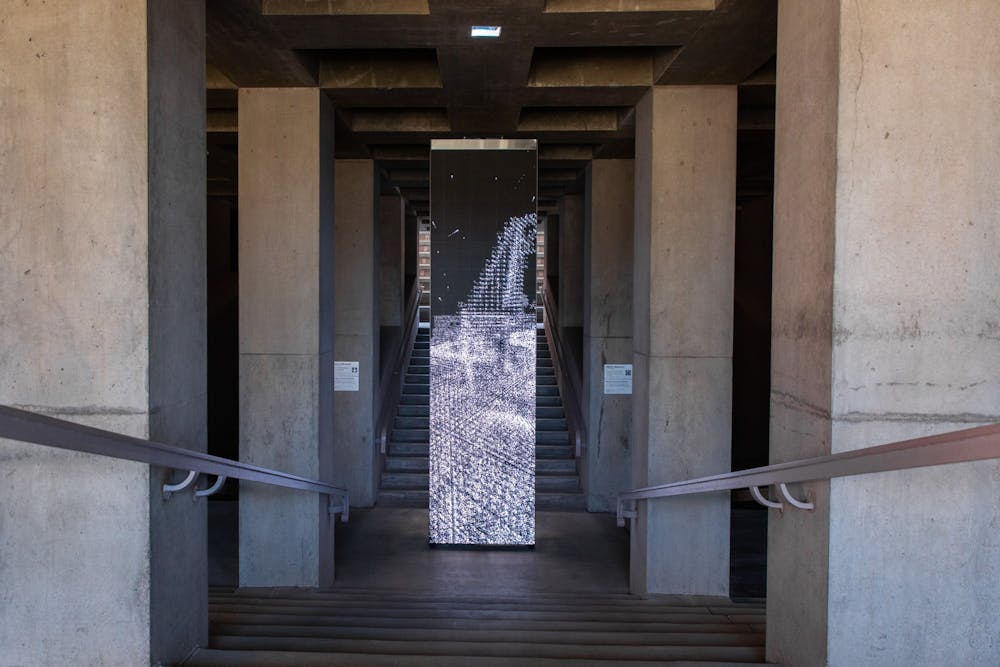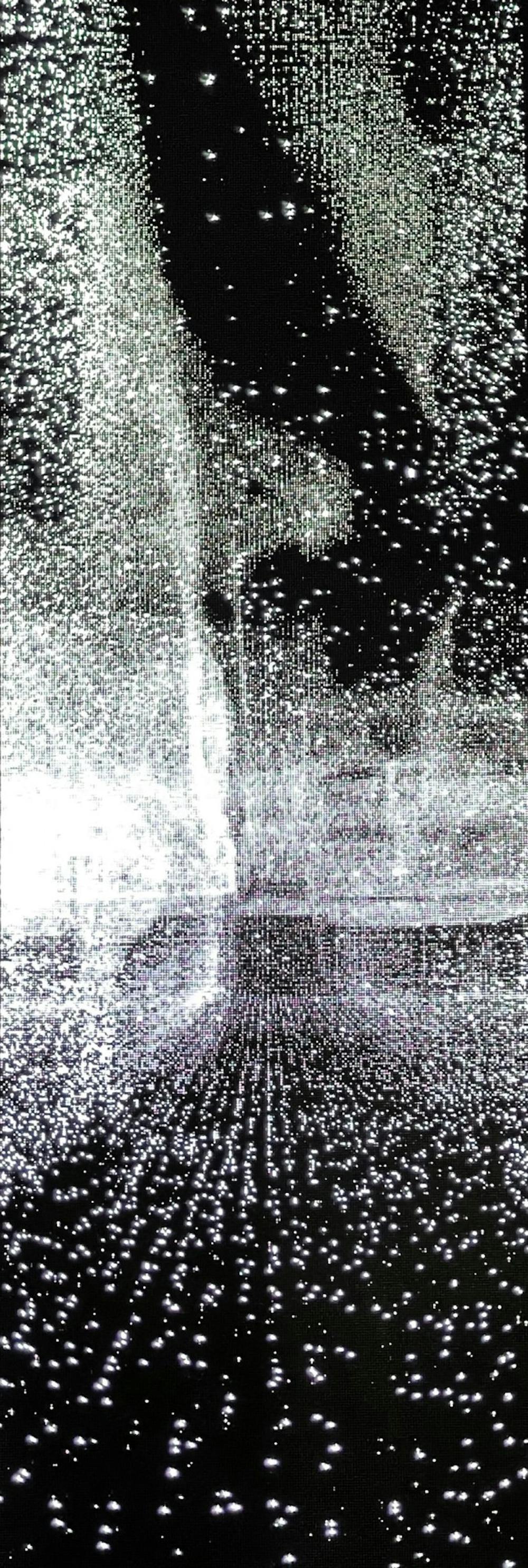A collaboration between the ASU Art Museum and the Los Angeles County Museum of Art has spurred a newly commissioned light sculpture by light sculpturist Leo Villareal.
The "Point Cloud" public art sculpture, part of ASU Art Museum's Halle Public Art Initiative and supported by The Diane and Bruce Halle Foundation with additional funding from the Herberger Institute Dean’s Creativity Council, is housed in the semi-underground heart of the museum and was directly inspired by its unique architecture.
The ASU Art Museum was designed by Antoine Predock in 1987. Predock purportedly drew inspiration from traditional Mayan and Egyptian architecture when designing the building, Julio Morales, a curator at the ASU Art Museum, said.
In creating the "Point Cloud" public art piece, Villareal worked with the mobile 3D scanning technology company Kaarta to translate Predock's desert-inspired work into a towering amalgam of light. This commission is the first instance of Villareal collecting data from a location as part of his work.
"I've been making light sculptures for over 20 years, and my work has always been abstract, so I'm not using any kind of imagery or text, but creating my own sequences using my custom software," Villareal said. "When I went to visit ASU, I found Antoine Predock's building very striking."
Villareal utilized Kaarta's technology to scan the exterior and interior of the museum, Morales explained, adding that "once in a while, when you look at the installation, you'll see abstracted lines and then, sometimes, recognize specific areas of the museum." The "Point Cloud" installation doesn't repeat itself in any of its sequences, Morales said.
The installation, along with other public artworks brought to life by Villareal, can act as a "digital campfire," Morales said, a place to convene with friends or family in a safe way to engage with artistic culture together directly.
Kaarta's technology extends beyond typical photography and into the realm of 3D data collection, Villareal explained, adding that ASU Art Museum Director Miki Garcia and the rest of the curatorial team were "very open to (the piece) being highly experimental," resulting in a period of expansive data gathering in an effort to mirror the museum's architectural idiosyncrasies.
The ASU Art Museum has a plethora of work that members of the ASU community can engage with and enjoy remotely through GuidiGO, a free app that lets users take curated, self-guided virtual tours through the museum, Garcia said, "which is perfect in the time of COVID."
READ MORE: New ASU Art Museum exhibition aims to highlight women artists in collection
Amid the pandemic, society's need for art is more apparent than ever, Garcia said, "and to be able to have public art, to see it without having to feel like you're going to get sick, is incredibly important."
Garcia, who previously worked as a project coordinator for the Public Art Fund for over three years, said that "in this day and age when institutions like museums are being challenged … to greater equity, to greater sense of accessibility, public art plays an incredible role in bringing art to the public" for consumption free of inequity.
To some, art museums can be inaccessible or intimidating, Garcia said, but art that seeps into the public realm offers individuals an opportunity to experience work "in your own space," alleviating anxiety or feelings of intellectual inferiority that arise as a byproduct of the siphoning off of artistic culture for an elite crowd.
"We spent a lot of time studying the building, and where could a piece be located and what dimension should that piece be," Villareal said. "Just looking at the building, the central axis is so powerful that it seemed logical to put it there, and there's already this kind of natural gathering space. And one of the things I like about the location is that you don't actually have to go into the museum to see the piece."
Echoing Garcia's sentiment, Villareal explained that art has a substantial and ever-growing role to play in the world, and art that exists in the public sphere can often act as a mechanism for bypassing systemically elitist art institutions to increase accessibility to artistic culture.
READ MORE: Elitism prevails in American art museums
"You don't only experience public artwork with your eyes, you experience with your whole body, your whole senses," Garcia said. "Because as you approach it, the scale, where it exists, shadows, the time of day, all of that (impacts) how you're experiencing the work. And you can't really do that in a museum, which is such a neutral space."
Reach the reporter at stellefs@asu.edu and follow @samtellefson on Twitter.
Like The State Press on Facebook and follow @statepress on Twitter.
Sam Ellefson is the Editor of State Press Magazine, leading a team of writers, editors and designers in creating four print issues each semester. Sam is a senior getting dual degrees in journalism and film studies and is pursuing an accelerated master's in mass communication at ASU.





